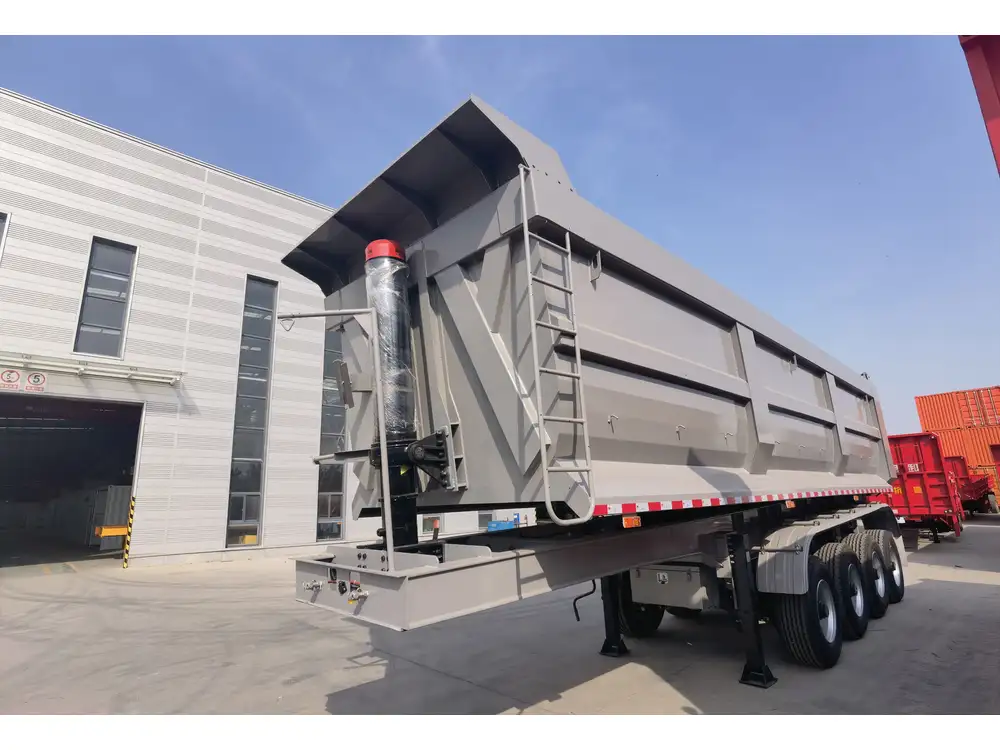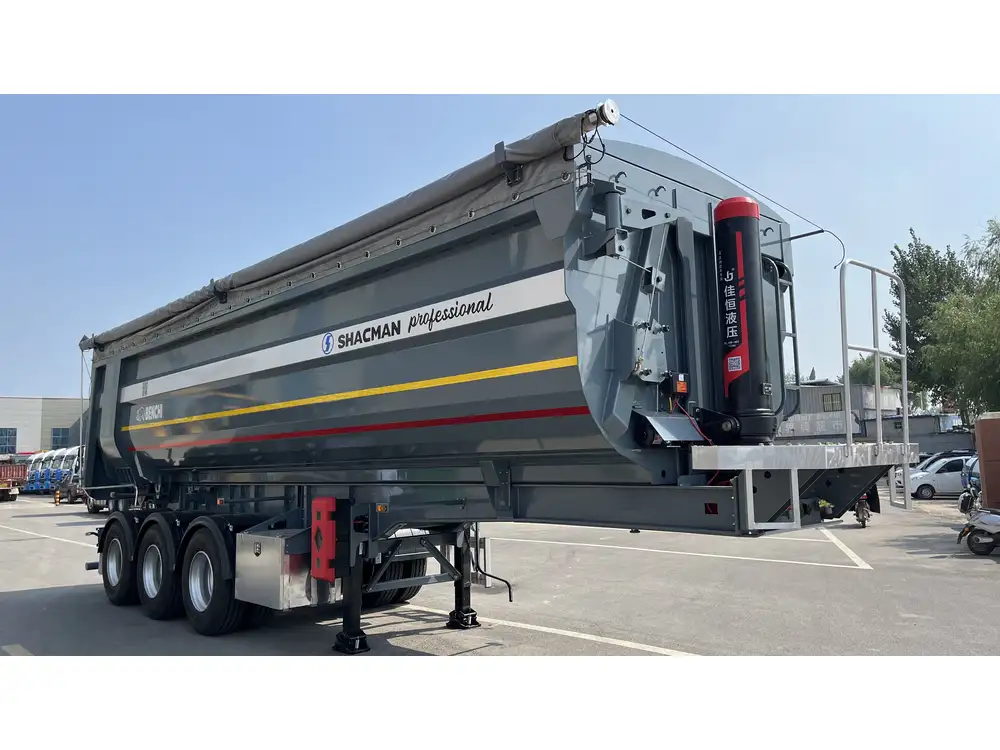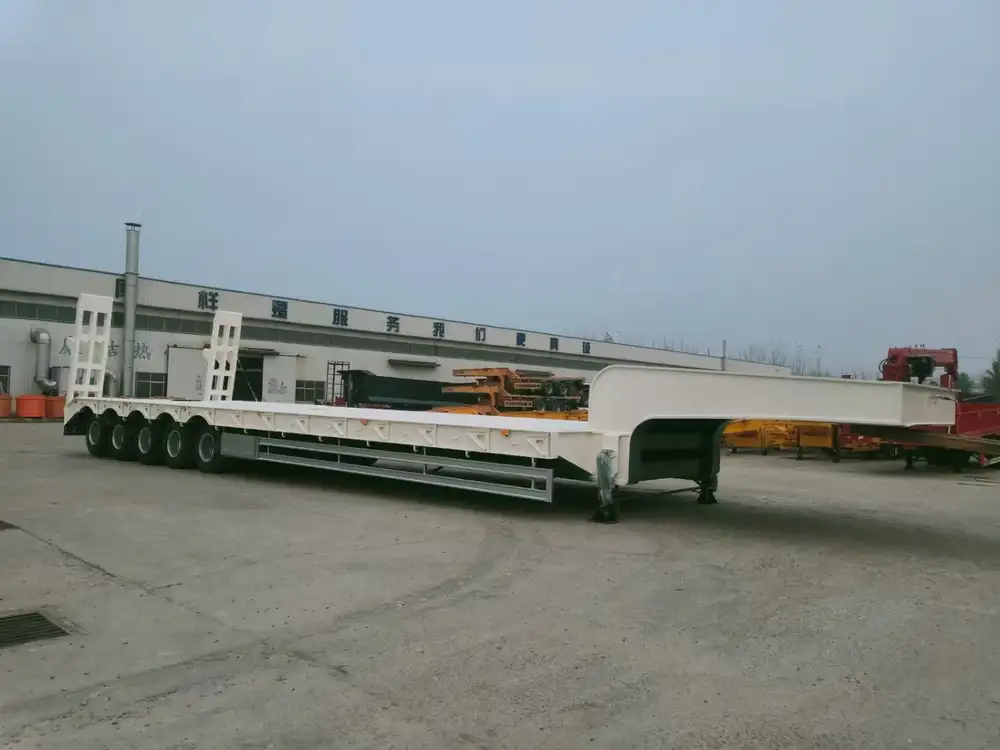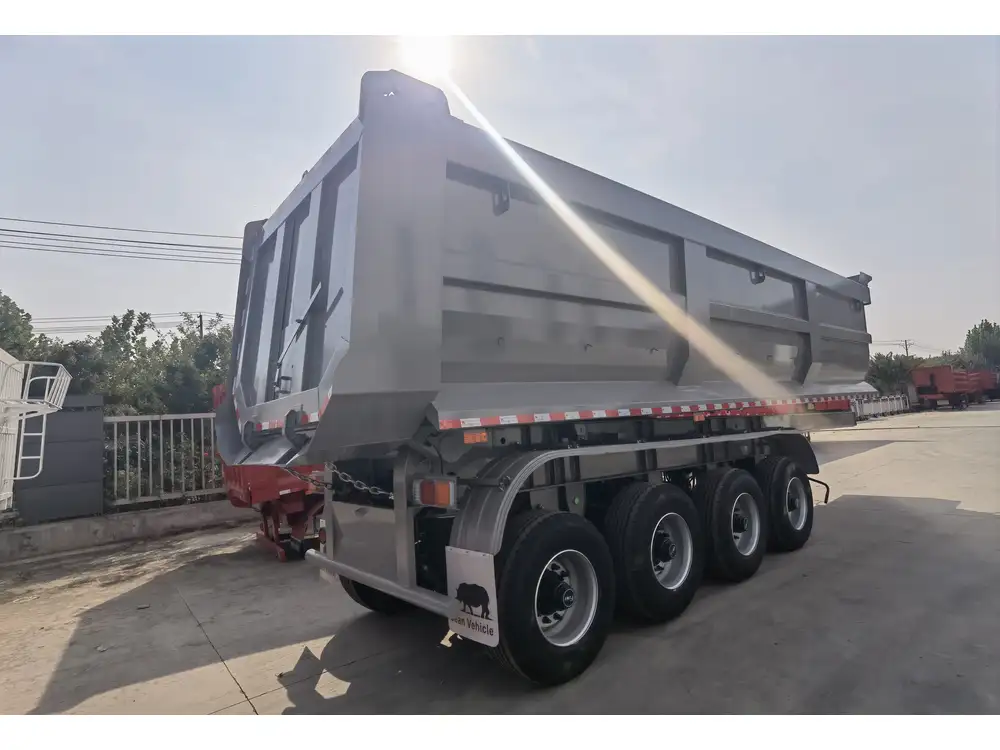Semi-trailer brakes are crucial for safe and effective transportation of heavy loads. As manufacturers and stakeholders in the trucking industry, understanding brake wear can save you from potential accidents, costly repairs, and downtime. In this article, we delve into the intricacies of identifying when semi-trailer brakes have reached their limit, ensuring safety and reliability on the road.
Understanding the Importance of Trailer Brakes
Role of Semi-Trailer Brakes
The brakes of a semi-trailer play a vital role in its operational safety. They are integral to stopping and controlling the entire combination of the tractor and the trailer, particularly under heavy loads. Well-maintained brakes not only ensure compliance with safety regulations but also enhance operational efficiency.

Types of Brake Systems
Air Brakes: Most commonly used in heavy-duty vehicles. They rely on compressed air to activate the brake system, offering strong stopping power ideal for large trailers.
Hydraulic Brakes: Although less common, they are utilized in lighter trailers, using brake fluid to transmit pressure.
Disc and Drum Brakes: Semi-trailers can be fitted with either disc or drum brakes, each with distinct characteristics regarding wear and effectiveness.
Regulatory Standards
Various regulations dictate the acceptable performance and maintenance standards for semi-trailer brakes, including the Federal Motor Carrier Safety Administration (FMCSA) guidelines. Awareness of these regulations is imperative for operators and manufacturers alike.
Signs of Worn Semi-Trailer Brakes
Recognizing early signs of brake wear can prevent catastrophic failures and enhance safety. Here are the key indicators that your semi-trailer brakes may be worn out:

Decreased Performance
Worn brakes typically manifest in a noticeable reduction in stopping power. This condition can be evident during emergency stops or when the trailer struggles to slow down under load.
Longer Stopping Distances
If you find that your semi-trailer takes considerably longer to come to a complete stop, it’s a significant indicator that the brakes are worn. Increased stopping distances can lead to dangerous situations, particularly in high-traffic areas or adverse weather conditions.
Unusual Noises
Noise serves as a critical alarm for brake condition. Scraping, grinding, or squeaking sounds can indicate that the brake pads or shoes are excessively worn. These sounds primarily arise from the contact of metal components, signaling the need for immediate inspection.

Vibration or Pulsation
While braking, if you experience vibrations or a pulsating sensation coming from the brake pedal, it may indicate uneven wear or a warped brake rotor. This condition can lead to further damage if not addressed promptly.
Visual Inspection Indicators
Brake Pad Thickness
One of the most straightforward methods for checking brake wear is through visual inspection. Brake pads should ideally have a minimum thickness as specified by the manufacturer. If the pads appear worn down to below this limit, they require replacement.

Rotor Condition
Discoloration or a warping of the brake rotor is another critical visual sign of wear and tear. Look for signs of heavy scoring, uneven wear patterns, or any cracks, which can compromise braking efficiency and safety.
Brake Fluid Inspection
Check the level and condition of the brake fluid. Contaminated or low brake fluid can indicate issues within the braking system and may lead to reduced braking capabilities.
Brake Warning Lights
Modern semi-trailers are often equipped with dashboard indicators that alert drivers to brake issues. If warning lights illuminate while driving, it’s vital to get a comprehensive inspection immediately.

Factors Contributing to Brake Wear
Understanding the factors that contribute to brake wear can help you mitigate risks and extend the lifespan of your braking system.
Load Weight and Distribution
Overloading a trailer or improper load distribution puts excessive strain on the braking system, leading to quicker wear. Ensure loads are evenly distributed and within permissible weight limits.
Driving Habits
Aggressive driving, frequent hard braking, and prolonged use of brakes during descents can accelerate wear. Encourage drivers to adopt smoother, more controlled driving techniques to preserve brake functionality.

Climate and Road Conditions
Inclement weather and rough road conditions also contribute to brake wear. For instance, frequent stops in heavy traffic can lead to increased heat and associated wear on brake components.
Maintenance Practices
Regular maintenance, including inspections, adjustments, and replacements, is crucial. A well-maintained braking system can significantly reduce wear and ensure optimal performance.
How to Maintain Semi-Trailer Brakes
Effective maintenance is key to maintaining the integrity and longevity of semi-trailer brakes. Here are best practices:

Scheduled Inspections
Establish a regular inspection schedule, aligning with the manufacturer’s recommendations. This schedule should include checks for brake pad thickness, rotor condition, and overall system integrity.
Brake Component Replacement
Replace brake pads and shoes at the first sign of significant wear, as neglect can lead to further damage and costlier repairs. Ensure that replacements meet manufacturer specifications.
Cleaning and Adjustments
Keeping brakes clean from dirt and debris is essential for their operation. Regular cleaning of brake components and proper adjustment of brakes can help maintain functionality.

Monitoring Brake Fluid Quality
Every few months, check the brake fluid for contamination and level. Replace fluid as needed to maintain responsive braking performance.
DIY Brake Inspection Checklist
Here’s a handy checklist for conducting a basic brake inspection on your semi-trailer.
| Inspection Item | Details | Frequency |
|---|---|---|
| Brake Pads | Check the thickness (minimum recommended thickness). | Every month |
| Brake Rotors | Inspect for cracks, warping, or scoring. | Every month |
| Brake Fluid | Examine fluid color and level; top-off if necessary. | Every month |
| Air Lines | Inspect for leaks, kinks, or abrasions. | Every month |
| Brake Lights | Ensure dashboard lights and indicators are functional. | Every trip |
| Visual Check of All Parts | Look for signs of rust, corrosion, or wear. | Every month |
When to Seek Professional Help
While conducting DIY inspections is valuable, certain situations necessitate professional evaluation. If you experience any of the following conditions, it’s critical to consult a qualified technician:
- Continued Warning Lights: If the brake warning lights persist despite thorough inspections, professional evaluation is necessary.
- Severe Vibration: Unsolved vibrations may indicate deeper issues within the brake system that require specialized equipment for diagnosis.
- Repeated Brake Failures: If brake performance issues recur after maintenance, a professional should assess the entire brake system to identify underlying problems.

Conclusion: Ensuring Safety on the Road
Recognizing and addressing signs of worn semi-trailer brakes is essential for ensuring the safety of drivers and other road users. By implementing a systematic approach to maintenance, conducting regular inspections, and understanding the indicators of brake wear, you can significantly reduce the risk of accidents and costly repairs.
In a competitive market, maintaining effective braking systems not only preserves safety but also enhances operational efficiency and reliability. Stay proactive, prioritizing brake health to secure your fleet’s safety and performance.



